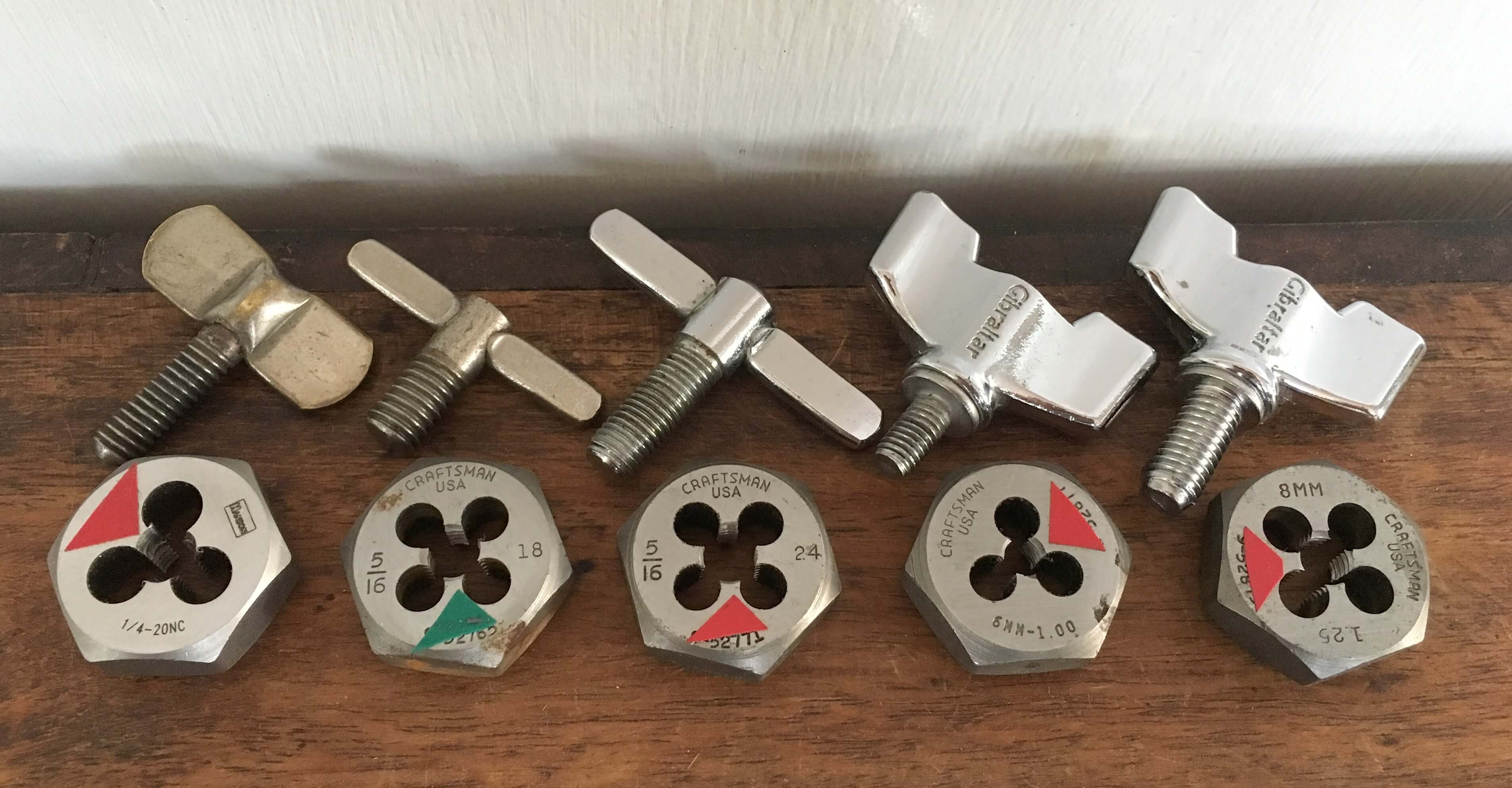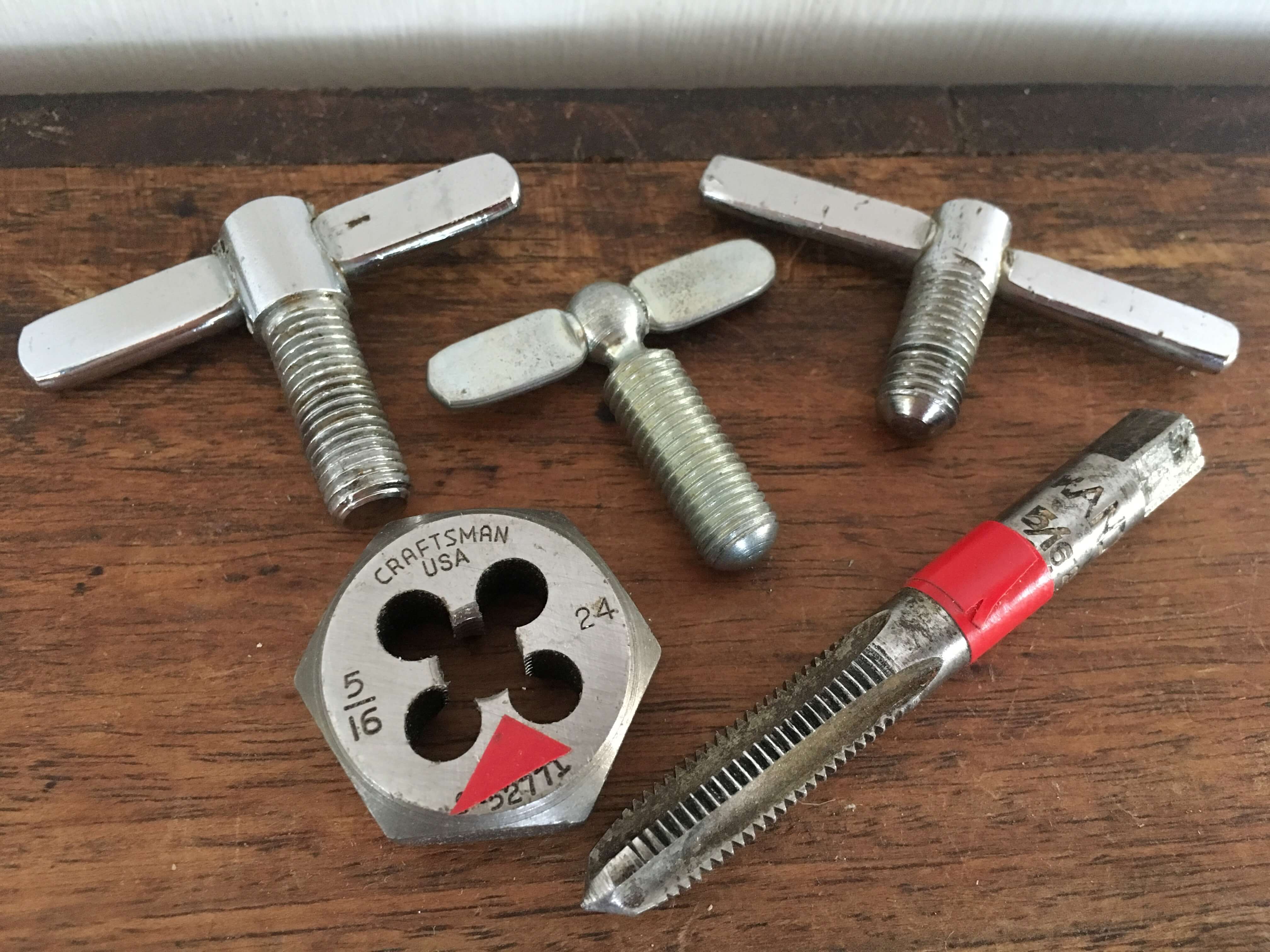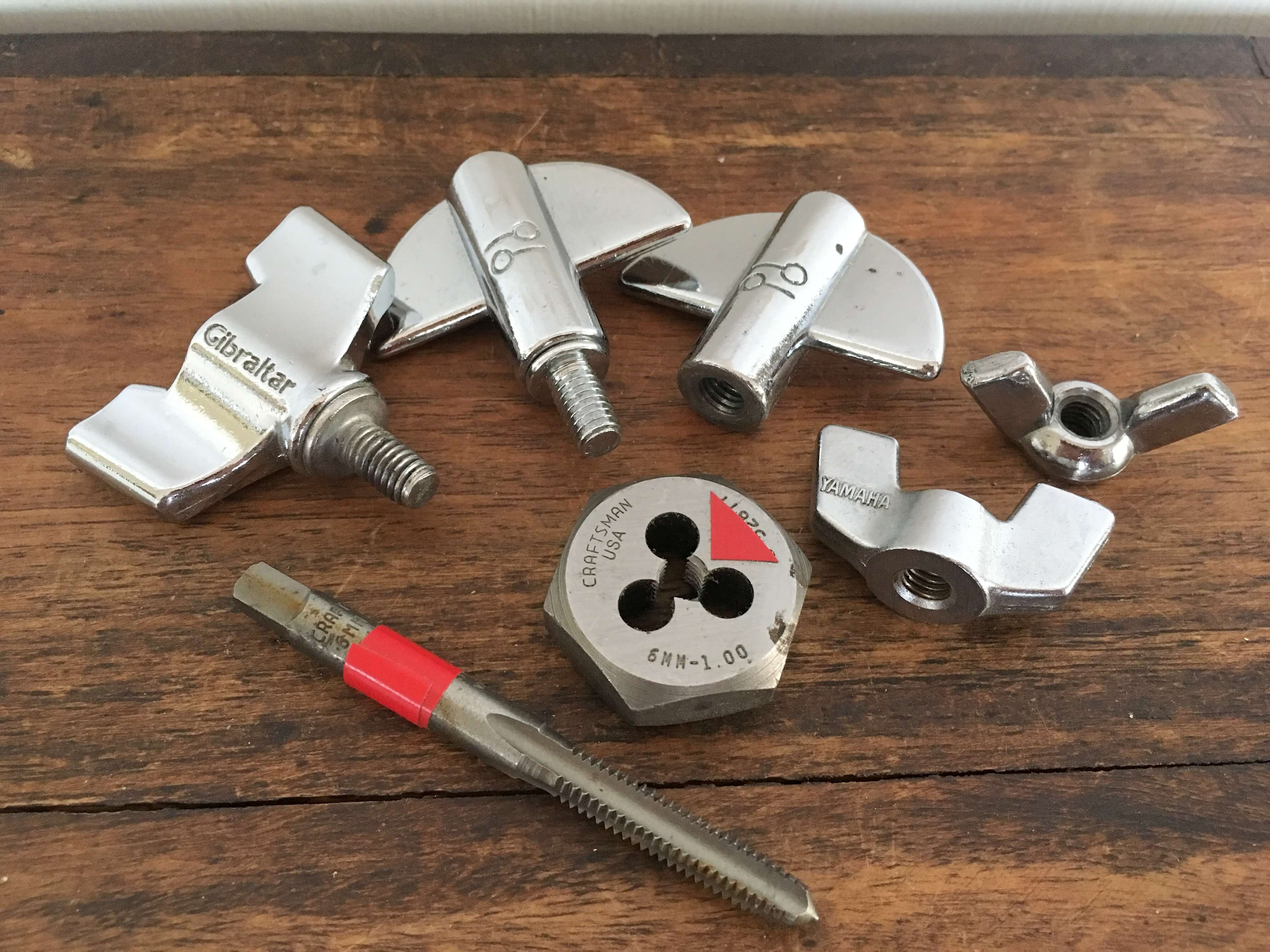Ideas Worth Threading
The Five Most Common Drum Hardware Threads

I’ve long wanted a quick reference for common thread counts of drum parts, so I figured I’d just write one myself. This article covers the five most common thread diameters and counts for US-made drum wing nuts and bolts. Use the information herein to buy an appropriate tap and die set, or just to order parts accurately.
I’ll try to list what each thread is/was commonly used for. We’ll start with the vintage ones.
1/4-20: Common Vintage Drum Hardware Thread

The 1/4-20 thread can be found on all sorts of drum hardware made before about 1980. From stands to clamps to brackets, it is by far the most commonly used thread count from the vintage era. Every brand made a lot of 1/4-20 parts, which makes it fairly easy to mix brands when repairing vintage drum gear.
These days it’s pretty rare to see new drum equipment produced with this thread. It is however still a standard for photography gear, in particular camera tripod mounts.
This thread holds up rather well and plenty of vintage examples exist. It’s a good idea to keep a stockpile of them for restoration.
5/16-24: The Stripped Bolt On Your Gretsch Bracket

The 5/16-24 thread is less common but was used for many years by Gretsch and Slingerland, and on the Ludwig Speed King pedal. The picture above shows, from left to right: a Slingerland floor tom bracket bolt, a Ludwig Speed King bolt, and a Gretsch diamond bracket bolt.
The tight thread count, combined with the high torque applied to floor tom leg brackets, has led to a ton of stripped parts over the years. As a result these bolts in good condition are at somewhat of a premium now.
Gretsch used this thread from the Broadkaster era up until the Techware era, most noticeably on their diamond-shaped floor tom and cymbal arm brackets.
Slingerland used this on their floor tom brackets when they replaced the push-button style with the wing bolt style in the early 1960s. Their cymbal stands in the 70s also had these on their lower tripod sections.
The wing bolts on Rogers Swivomatic “swan leg” stands are usually this thread.
5/16-18: Pedal Clamps, MIJ Brackets and Others

The 5/16-18 thread is a common standard of modern hardware stores. It is less common in the drum universe but worth noting here. It looks deceptively like the 8mm modern thread (see below), which can be frustrating and lead to damage by trying to thread a more common part into a 5/16-18 receptacle or vice versa.
This thread was used on a lot of vintage bass pedal hoop clamps, notably Camco and Gretsch’s “Floating Action” pedals. Drum Workshop continued using it decades later when they made the DW5000 based off the same design, and have continued even as they designed their own branded wing bolts.
Many Japanese drum makers in the 60s and 70s used this thread on shell-mounted hardware such as leg brackets and tom post holders. Often these bolts had square drum key heads.
Latin Percussion continues to use this thread on a lot of their clamps and small utility hardware.
Ludwig has commonly used this thread on their 1216 and 1610 brackets. Their Consolette rail mounts (as well as other rail mounts) utilized 5/16-18 thread on the hex nuts and carriage bolts.
8mm-1.25: Large Modern Drum Hardware Thread

The 8mm-1.25 thread has been the standard for modern drum hardware since around 1980 or so. It’s a full-sized thread that holds up well and it’s on pretty much everything, from shell hardware to stands to clamps.
Almost every pro brand uses this thread as a standard. LP is an exception, and DW still uses the more coarse 5/16-18 thread on some hardware as noted above.
The tops of most modern cymbal stands use this thread which means that many vintage cymbals, which were designed for use with 1/4-20 tilters, will not fit on such stands.
6mm-1.00: Small Modern Drum Hardware Thread

The 6mm-1.00 thread is also very common on modern drum hardware and is often used where less space is available and an 8mm bolt or housing wouldn’t fit. Or sometimes it’s simply used as an alternative to the larger diameter thread.
6mm-1.00 is sometimes a hallmark of less expensive hardware; for instance student-level cymbal stands will generally have 6mm tilters.
As the thread count is tighter than the common 8mm thread, these parts are more prone to stripping and/or cross-threading. Fortunately it’s easy to find generic wing nuts (such as the one on the right in the above photo) at most any hardware store. Wing bolts are more of a specialty item.
Other Threads
There were many small wing bolts and thumbscrews of assorted thread counts and diameters used in the traps era, and in general before about 1960. I have dozens of these laying around in my parts bins and they’re difficult to reuse for anything else as there wasn’t much standardization. The larger bolts were much more standardized, fortunately.
In a future post I hope to cover different tension rod threads, which were always separate from wing nuts and bolts.
Pingback: THREAD Talk II |